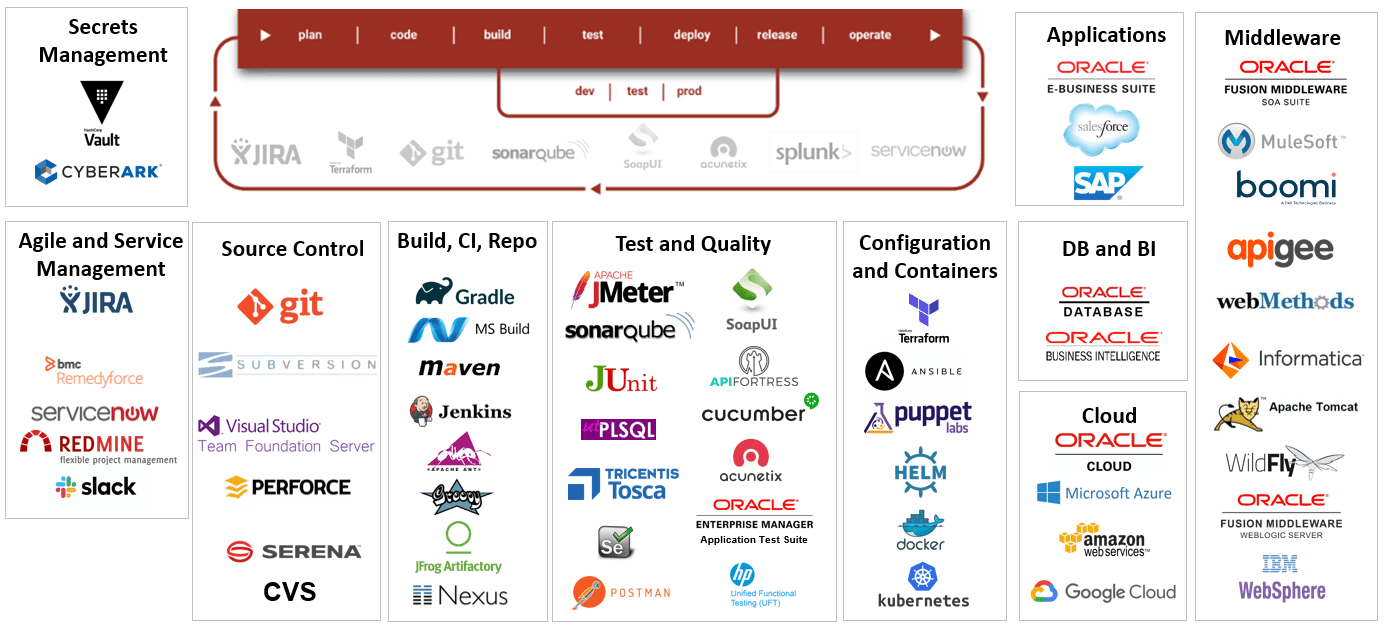Ready to automate your pesky manual tasks? Looking to release more frequently and decrease your time to market? Interested in saving money in your IT department?
If you answered yes to any (or all) of these, a Continuous Delivery and Release Automation (CDRA) platform might be the next step for you!
The next challenge is choosing the right platform. This is not only difficult because of the number of options on the market and their various features, but also because you must decide whether to choose a comprehensive platform or knit multiple tools together.
This is the dilemma of best of breed versus all-in-one.
Let’s dive in.
Best of Breed vs. All-in-One
First off, definitions.
Best of breed refers to products or tools that satisfy a specific need or serve a niche. Each has a specialized purpose and must usually be used in conjunction with other tools in a tool chain to fulfill an organization’s needs. These various tools can be from one vendor or from many.
On the other hand, all-in-one (i.e., best in class or best of suite) refers to a single product with a variety of core functions that satisfies all (or many) a business’s needs
As with all the important decisions in life, there are pros and cons of each options. Here are some of the factors to keep in mind:
- Costs
- Feature Availability
- Ease of Use
- Coverage of Technologies
- Vendor Support
Costs
Going the best of breed route means purchasing multiple tools to meet your needs. With multiple solutions comes multiple licensing, integration, support costs for the various vendors.
Meanwhile, with an all-in-one tool, the costs are more predictable and controllable. However, this means you’re at the mercy of a single vendor and the price they set. You are not able to shop around for each smaller tool or feature as you can with the best of breed strategy.
Feature Robustness
Because a best of breed tool serves a niche, it will not meet all your needs. Instead, you’ll have to incorporate multiple tools, or adapt to function without certain features.
An all-in-one tool will meet many or all your requirements and will have additional features. However, depending on the nature of your business and its IT functions, a single suite with many features and functions may not have enough in-depth coverage of a specific niche.
As far as feature availability goes, it all depends on your organization and its unique needs to decide between the two strategies to CDRA.
Ease of Use
With an all-in-one platform, there is one interface to understand and navigate, rather than the multiple often required with a best of breed strategy. This means less training is needed to adopt the new platform. It also allows for a standardization of technology for the organization, as there is one platform to process changes, glean data, etc.
However, because multiple solutions are packaged together, the platform may be more complex than a best of breed option. Yet, it may still be easier to implement one all-in-one tool rather than multiple best of breed tools which need to be knit together to cover your SDLC pipeline.
Coverage of Technologies
Most likely, you have a wide and varied technology landscape, with tools from agile project management and source control to secrets management, test and quality automation, and from ChatOps to service management. Other technology can span across infrastructure, database, middleware, and applications running on prem and in the cloud. Ensure there are either out-of-the-box solutions or integration capabilities for all of your technologies.
Vendor Support
Platform features and capabilities are important, but it’s critical to find a CDRA vendor who offers great support. Your vendor should function as a trusted partner and advisor. They should be willing and able to support you through issues, upgrades, landscape changes, and other enhancements.
Having a wonderful platform is pointless if issues do not allow you to access it or utilize it. Assistance should only be a call or email away. Your vendors should be looking out for your best interest and helping you get the most out of the platform.
Vendor relations are critical for both strategies.
For a best of breed strategy, there will be multiple vendors to communicate with, which can be particularly difficult when solving issues or figuring out bugs. For an all-in-one strategy, you only have to correspond with one vendor. This is less cumbersome, but it also means that you rely on that single vendor.
Best of Both Worlds
So, you may be wondering, “If there are pros and cons to each option? Which do I choose?”
Marvelous question! Why not both?
There are, indeed, all-in-one platforms that allow integrations with best of breed tools.
Some customers want one tool to manage everything, and others want to use multiple best-of-breed tools and stitch them together to cover the entire build through release process. With FlexDeploy, you can have both!
FlexDeploy is a comprehensive platform with build, deploy, and release all built in. Additionally, there is integration/API support across the tool chain.
There is native functionality for build, artifact repository, deploy, release, reporting, AND integration capabilities (either natively with a plugin, or via APIs) with best-of-breed tools across the pipeline.
For example, you can use FlexDeploy’s internal CI server, or integrate with if you’d prefer. Use FlexDeploy’s artifact repository, or connect to your existing Artifactory or Nexus implementation.

Don’t Just Take Our Word for It
Forrester Research recently released The Forrester Wave: Continuous Delivery and Release Automation, Q2, 2020.
They stated, “Platform breadth is the name of the CDRA game,” and investigated the 14 most significant CDRA providers.
This report offers insight into what business and technology leaders should be looking for in a CDRA platform. Take a read to see how FlexDeploy rated!



